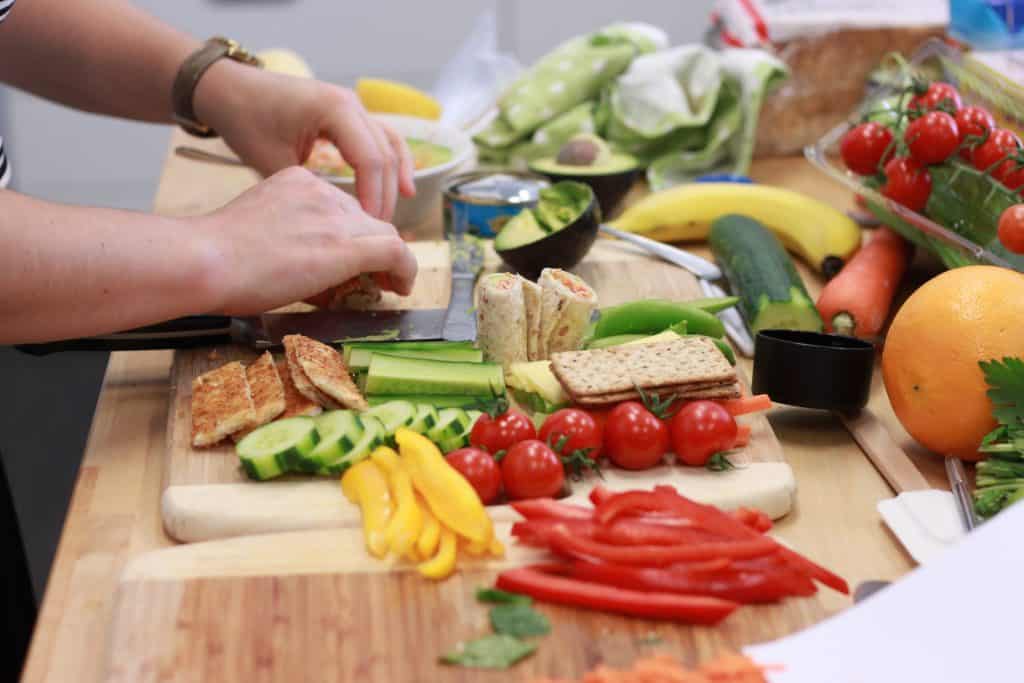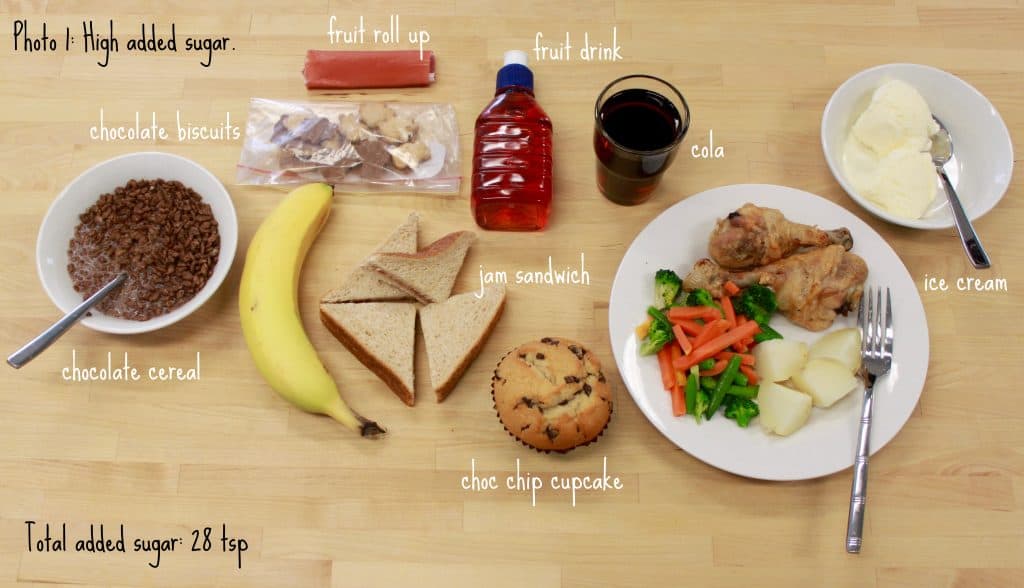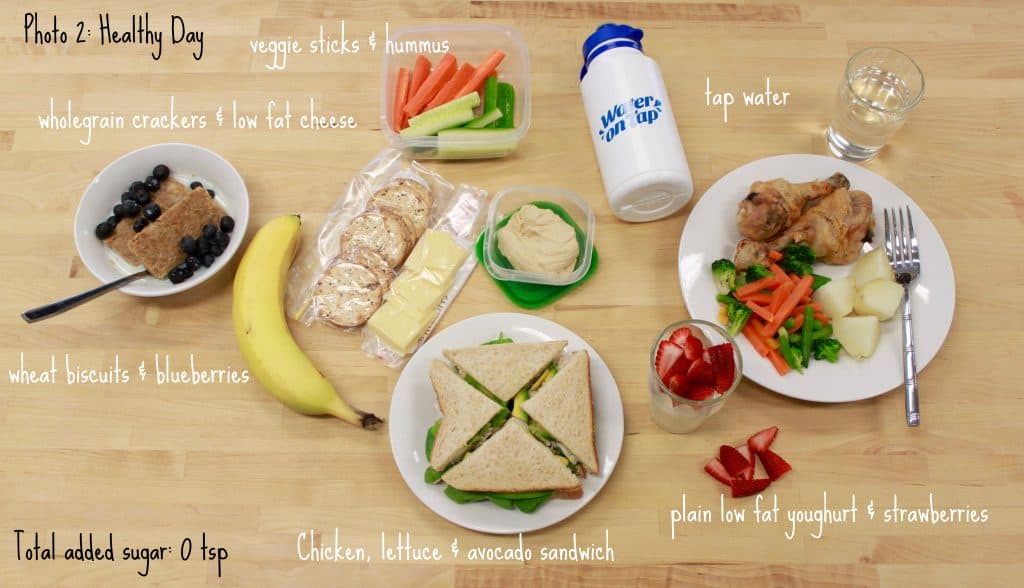
The best way to ensure healthy habits in adults, is to instil them in kids. Kids are developing lifelong behaviours, their view of the world, their body image and their relationship with food well into their teenage years and beyond. Childhood is the perfect time to start encouraging healthy eating and set your child up for good health.
Encouraging kids to eat well is NOT shaming or scaring them about unhealthy foods. Negative talk about food doesn’t actually help children establish healthy eating habits. In many cases, it actually teaches them to feel unnecessary shame and guilt. Food is not good or bad. It holds no moral value. Statement’s like the ones below are not helpful:
- “Chocolate makes you fat”
- “Chips will make your butt big”
- “Sugar is poisonous”
- “Cocoa Pops are bad for you”
Keep your own language and behaviours with food positive and fun. Healthy eating shouldn’t be a chore and it’s not about missing out on yummy foods! Healthy eating can be fun, social, enjoyable, delicious and it’s up to us to teach our kids to view it that way!
Raising healthy kids, in my opinion, requires two things:
- Good quality food education
- Creating a healthy environment
Food education
Good quality food education should teach kids about food; the five food groups, the nutrients found in food and their role in the body. Good food education should also go beyond simply giving information and teach kids the skills to put healthy eating habits into practice; like learning how to prepare, store and cook food.
Firstly, good food education happens in the home. As a parent, if you need help with establishing a healthy relationship with food for yourself, come and get help. Helping yourself will help your kids!
And secondly, good food education happens at school. The team effort of home and school means that by the time kids start to make their own choices, they’ll do so confidently and without stress. The ACT government Fresh Tastes program is a fantastic initiative in Canberra schools. Make sure you check to see if your kids go to a Fresh Tastes school and if they don’t encourage your school to join the program! The Healthy Eating Hub is proud to be a part of it!
Creating a healthy environment
Creating a healthy home environment is a much better way to address the food habits of your kids, compared to simply calling some foods ‘good’ and others ‘bad’.
Before we go on there are two distinct words that you need to understand when it comes to kids and food: availability and accessibility.
Food availability refers to the food being available to eat. This means that it’s in the house. It’s in the pantry. It’s in the fridge. It’s in the lunch box. It’s on the table.
Food accessibility refers to whether the child is able or allowed to eat the food or not. For example chocolate may be available (it’s in the fridge) but it’s not accessible (you won’t let them eat it).
Make less healthy food unavailable
If your home doesn’t contain unhealthy food (chicken nuggets, chocolate, biscuits, cakes, chocolate cereal, soft drink etc.), then it’s not available for your children to eat. And you know what? They won’t miss it. I never demonise foods, by talking about how ‘bad’ they are, however, unhealthy foods are rarely available to eat in our home. When it’s not available the kids don’t ask for it and as a result they rarely eat it.
If unhealthy food is available to eat, I nearly always let them eat it. I don’t make a big deal about it and I often enjoy it with them. I don’t want to create a stigma around this food and make them want it even more. I regulate their intake of these foods by controlling how available they are. If these foods are available but not accessible, they become ‘special’ in the child’s eyes and they’ll want to eat it even more.
Make healthy food readily accessible
Good nutrition is more about what you do eat, than what you don’t eat. Your body needs carbohydrates, proteins, fats, vitamins, minerals, fibre and other nutrients and you get them by eating a wide range of nutrient dense foods. Research shows that making healthy food like fruit, vegetables, nuts, seeds, whole grains, legumes, dairy, meat, poultry, eggs and seafood readily accessible in your home is the best way to eat them regularly.
Kids love to snack and graze, so have vegetable sticks (carrots, capsicum, cucumber etc.), fresh fruit (apples, bananas, melon cubes, grapes, etc.), cold meats (tuna, chicken, leg ham, etc.), boiled eggs, nuts, seeds, grainy crackers and other quick snacks on hand to offer your kids when their tummies are grumbling.
If your kids aren’t used to this kind of food, be persistent. Your job is not to force them to eat. Or bribe and coerce them. Just make the food available and it’s up to them whether they eat it or not.
Use healthy language
Keep it simple. Focus on the foods ‘to eat’ rather than the foods ‘not to eat’. Talk about the qualities that the food provides the body like: a working immune system, healthy bones, strong muscles, a sharp brain, clear eyes, etc.
- Call to the table (focus on the social aspect of dinner, not the food): “Time to sit up at the table together as a family for our dinner!”
- Call to the table (child who doesn’t want to eat): “Johnny, you don’t have to eat it, but sitting up together as a family is what we do.” The child shouldn’t have to eat the meal, but don’t offer an alternative and keep encouraging that the child join the family unit.
- “I love eating broccoli with a sprinkle of feta (or other favourite food combo)”
- “Vegetables can help your immune system keep away the cold and the flu, how amazing is that?”
- “Wholegrain bread can help you run fast and jump high!”
- “How good are boiled eggs for a snack? They help me feel nice and full.”
- I love this fruit platter, it’s got so much colour and nutrients for a healthy body!”
Model healthy eating
Research shows that children must see their parents eat and enjoy healthy food. To do this, they must have plenty of opportunities to eat with you and eat the same meal as you.
As much as you can, create a regular family meal time and cherish this ritual with your spouse and other family members for as long as you can.
How to get started
Make small healthy swaps!
Small, achievable daily habits are more effective at helping your sustain changes long term, than trying to overhaul everything at the same time. This is the best way to help your kids adjust to a new way of eating. Here are some thoughts to get your started:
Check out the two pictures below. They each show a day’s worth of food for an average 8 year old. Photo 1 shows that although the child appears to eat reasonably healthily (wholemeal sandwich, fruit in his lunchbox, vegetables at dinner), this day contains about 28 tsp of added sugar (doesn’t include naturally occurring sugars in fruit, vegetables, dairy) and too much energy for their daily needs. It’s amazing how many ‘little treats’ add up.

Just a few simple swaps, however, and this day not only has less sugar, it also has more fibre, more calcium, more protein and a more appropriate amount of energy for an 8 year old.
See photo 2 below. We added swapped in a lower sugar breakfast cereal, popped vegetables into the lunchbox, swapped the sugary drinks for water and added in lower sugar snacks like cheese and crackers and yoghurt and fruit. As a result this day contains 0 tsp of added sugar (doesn’t include naturally occurring sugars in fruit, vegetables, dairy) plus all the benefits listed above.

Remember! You don’t have to make huge changes. Do one thing at a time. Here are some ideas:
- Swap all sugary drinks to water. Just make a decision that your family will drink water only and don’t look back. I promise you, you won’t miss it!
- Create a healthy breakfast!
- Swap one sugary lunch box treat for something lower in sugar. Try hummus with wholegrain crackers, popcorn, baked beans, boiled egg, tinned tuna, cheese sticks, chicken drumsticks, sushi, savoury muffins like our pumpkin and spinach ones.
- Swap out dessert for fruit or a low sugar treat.
Book in with a dietitian ff you would like some tips and guidance on how to prepare healthy yummy food for the whole family.




